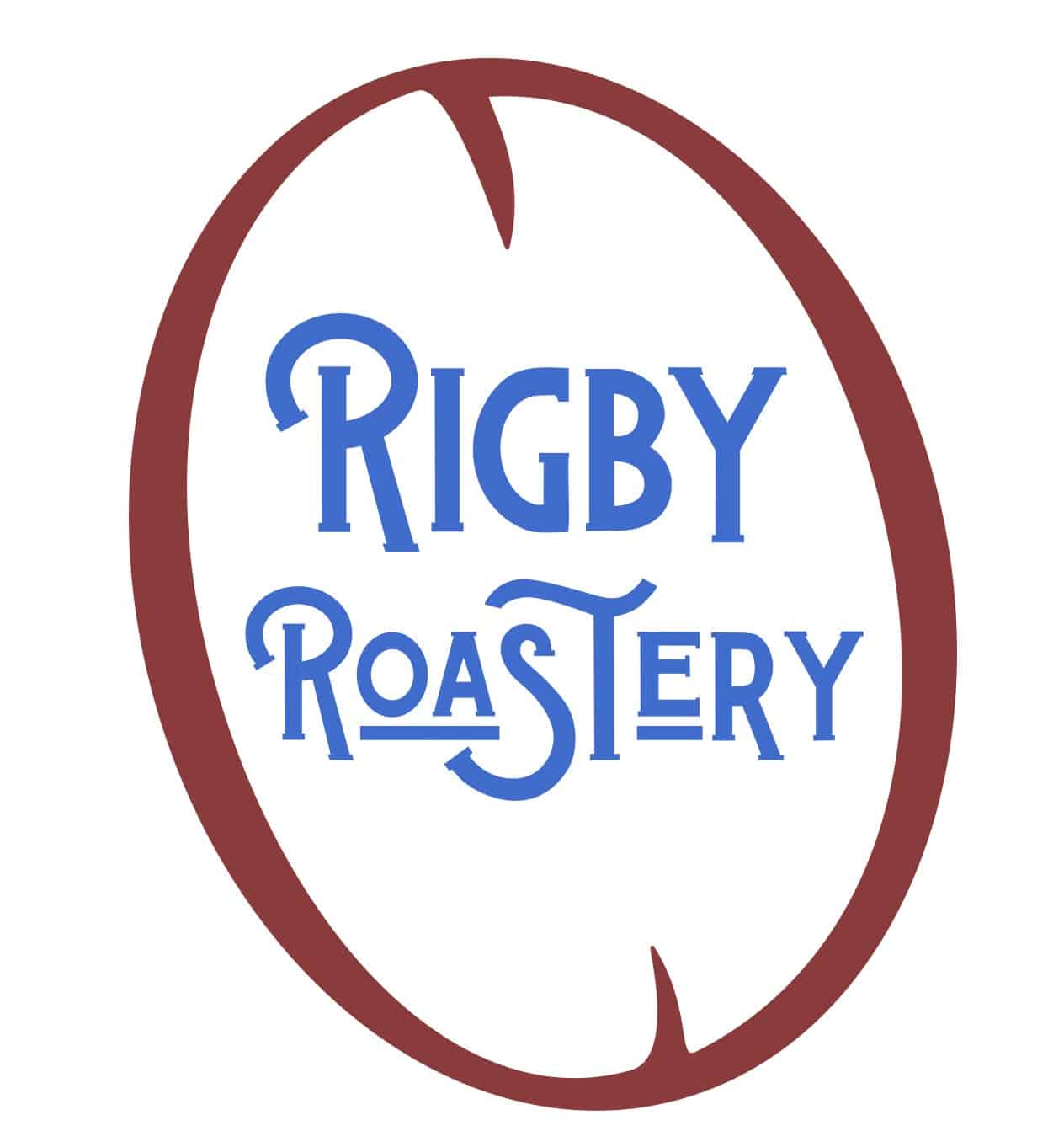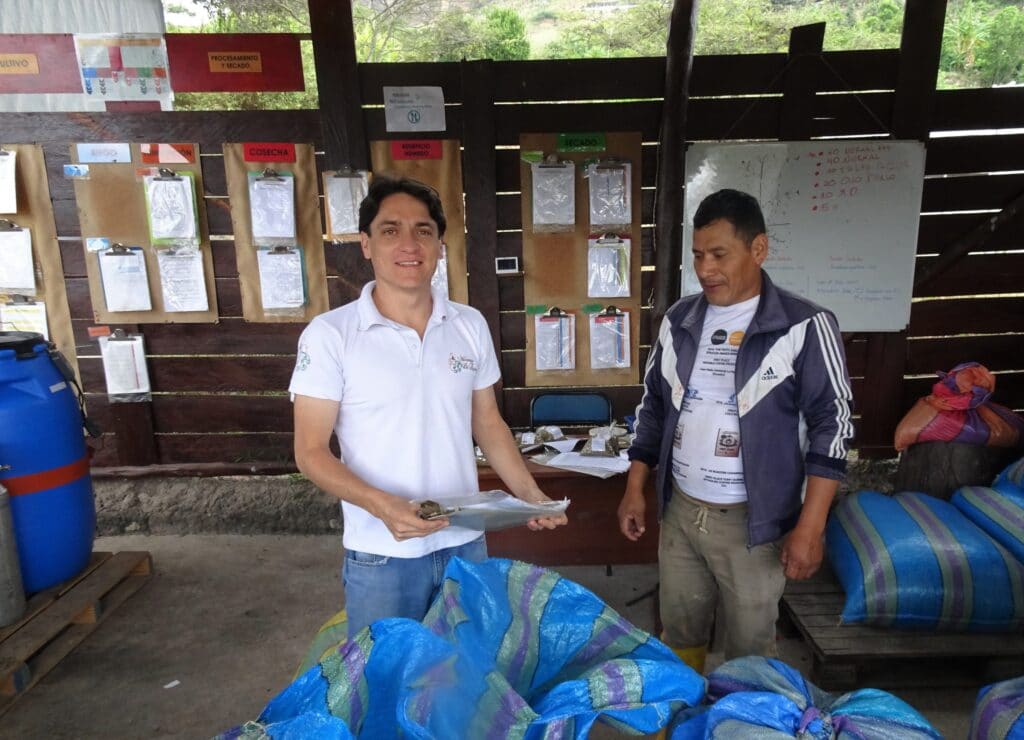Hacienda La Papaya Anaerobic Washed
Price range: $20.00 through $200.00
This combination of eccentric genetics and meticulous processing makes for an unforgettable and elegant cup of coffee. We taste Strawberry, Black Tea, Grape, & Chocolate.
Typica Mejorado. Hacienda La Papaya Ecuador hacienda la papaya natural. Sidra Coffee. Juan Pena Coffee.
Hacienda la Papaya: Bright, Fruity, Fun
This experimental anaerobic washed process coffee has a wealth of creamy citrus flavor. The most prominent being orange flowers and fruit. Meyer Lemon, pomelo, and a hint of lime are also present. All are well balanced by black tea flavors in the profile. It’s exceptionally aromatic and lively in the cup.
There is a fantastic complexity to it. The volume of citrus and tropical flavors it has to offer is a signature profile for a washed mejorado coffee. Mellow floral tones like vanilla and citrus blossoms are underscored by a sugary sweetness and a chocolaty feel. While the cup is complex and full of depth there is a rich body with a silky feel to it that creates a lovely harmony.
There is a lingering aftertaste of icing sugar that melds with the wonderful body of the coffee. Juan Pena’s famous attention to detail pays off.
This Typica Mejorado coffee varietal is as close to verifiable as the rare genetics allow. Juan maintains distinct groves of mother trees on his farm to ensure genetic controls are met. Appearing in Ecuador in the early 2010’s, farmers pass seeds to each other colloquially with no known formal record of breeding practices or provenance.
The story goes that mejoradois an orphaned experiment born from the Nestlé lab that once existed in Pichincha. Hallmark characteristics of Typica Mejorado include velvety, clear, and present cups with prominent citrus and floral flavors. It’s notoriously creamy. Indeed, this coffee exhibits a nearly perfect structure for this palate. The notes are distinct.
This coffee can be dialed in for different palates on different brewers. It is a fun bean for an adventurous coffee drinker to tinker with. Conical pour-over brews were vibrant and clean. Bright and silky. But our favorite brews where flat-bottomed filters with a moderate grind and a lower coffee to water ratio. These brews specifically offer a rounder cup and more pronounced mouthfeel.
Espresso brews taste like marmalade and vanilla custard with a rich olive oil texture, and expensive chocolate bottom. Cold drip brews were like fresh orange juice, complex, and heavy on the tongue.
In conclusion, this experimental fermentation washed process coffee is funky and versatile. Brew it any way you like. Regardless how you do, it’s an absolute snack.
About Juan Pena Coffee
Hacienda La Papaya ballooned in popularity after the 2018 US Barista Championship, when Cole McBride and Kay Cheon placed first and third respectively, both with coffees from La Papaya. Certainly, specialty coffee producer Juan Pena is rocketing to the top of his field.
His ability to experiment with coffee to create reliable and replicable quality year after year is masterful. We’re excited to have his popular coffee on the menu. We’ve been brewing it in the Kalita wave non-stop!
Typica Mejorado is more rare due to the fact that it is a low-yielding varietal and sensitive. Through his exporting company, Cafe Exporto, Juan has done an excellent job of prioritizing cup quality over volume.
Cultivating a number of rare varietals that require more labor and mastering experimental processing techniques can be tedious but each micro-lot from this farm gets better and better each season. It is at the very least an uncommon thing. Even for some of the best farms in the world right now. Juan Pena has worked diligently to ensure this is the case.
Awards and Accolades
Juan Peña is likely a familiar name to anyone who’s been paying attention to recent US Barista Championships and Sprudgie Awards. Anyone interested in Ecuadorian coffees will know him well for his work over the last decade perfecting exciting and new methods of processing at his farm.
After 3 consecutive years winning Notable Producer at the Sprudgie Awards, we had high expectations for this rare bean and its certainly living up to the hype.
After the US Barista Championship was over, Cafe Imports invited Kay Cheon, third-place finisher (left), and USBC Champ Cole McBride to visit the farm their competition coffees came from… Today at Barista Mag Online, Kay br… https://t.co/f6PyEP9CQB pic.twitter.com/08ROMLxD6H
— Barista Magazine (@BARISTAMAGAZINE) May 26, 2018
Education and Experience
Juan’s degree in agronomy from University of Cuenca led him to start farming coffee in 2009. His work on the farm is rigorously scientific. Originally he was focused on long stem roses. He grew them commercially for the international market. That all changed when severe weather destroyed his rose bushes.
Eventually he pivoted completely to coffee. His experience as a flower farmer helps him innovate. Each of the 35,000 coffee trees at the farm has its own specialty designed drip irrigation set up. Because of this method and the surrounding climate, cherries on a single plant can vary in ripeness. Consequently, pickers have to be skillful and diligent.
Undeniably, the benefit of these methods is clear and worth the extra effort. However, these techniques would likely never be in use if not for Juan’s unique perspective and ingenuity.
His farm features 28 acres just a few miles from the Andes with prime climates at high elevations. Cuenca’s University has an agreement with the farm that promotes new techniques in fertilizer science, drying systems, and harvest controls.
His “garden of inputs” is an experimental collection of coffee trees. He plants them several yards apart and labels them with the fertilizer inputs they’re given. Significantly, this allows him to track the impact of the nutrients on growth and cherry development.
About the Anaerobic Washed Processing
This expertly processed micro-lot (Lot 1-E) is so well done. The coffee cherries go through a brief fermentation in polyethylene tanks before being washed.
Firstly, the cherries are carefully grown, picked, and sorted by a small team of well-trained farmers. Secondly, the whole cherry is sealed in polyethylene tanks for 100 hours in a strictly climate-controlled space. Lastly, the cherries are removed, the coffee is washed and it is dried for 4 weeks. Juan carefully monitors the entire process in specially designed environmentally managed rooms.
The dedication to science practiced at the farm is key. High quality comes from refined controls and documentation. Without a doubt the coffee processing that takes place here is special. With that in mind, the attention to the genetic profile is just as important.
Hacienda La Papaya: Community Focused
The farm is a socially responsible business that benefits the community directly.
- 7 permanent employees and 40 additional seasonal coffee production employees.
- The only formal employment in the zone. This means they receive social security.
- 80% of the employees are women.
- Juan provides neighbors and farm workers with seedlings and access to his nursery and micro mill. This is so they can develop their own farm plots.
Ecuador Coffee
Coffee beans from Ecuador demand a premium. The country has used the U.S. dollar for its official currency since 2000. In turn, this drives up the cost of labor. However, we see this as a positive. It means that farmers are being paid much higher than fair trade minimums for their goods.
Mostly the U.S. imports bananas, sea food, and cut flowers from Ecuador. When farmers decide to grow coffee here, it’s because it’s going to be a high-quality crop worth paying a high price for.
Saraguro, where this coffee is grown sits at 2700 masl! The Saraguro people are indigenous and make up a large part of the population. They are known for their traditional black hats and shawls that feature white spots.
Ecuador literally means “equator” in Spanish. It’s geography includes the Galapagos Islands. It is one of the most megadiverse countries in the planet. It has the most biodiversity per square mile out of all the countries in the world!
Coffee from this country is special. The terroir features many active volcanoes. Although they are mostly in the north. High elevations, cloud forests, biodiversity, and its location on the equator are the perfect recipe for some of the best coffees you can buy.
For more exciting coffee offerings, check out this Pink Bourbon Coffee.



